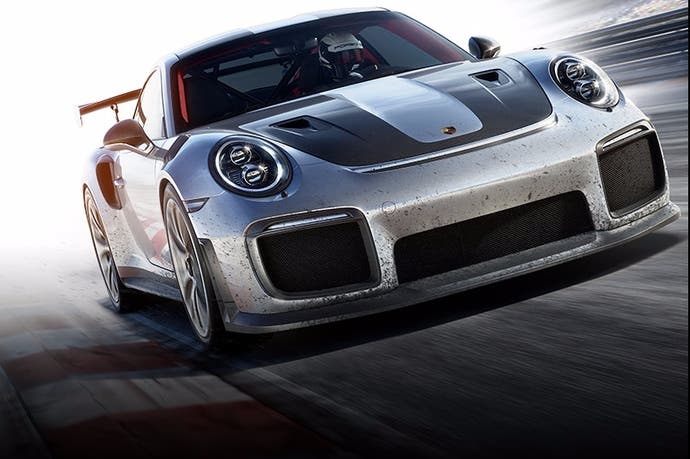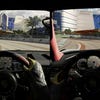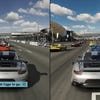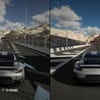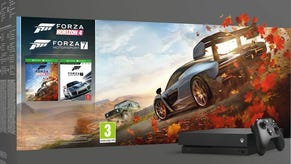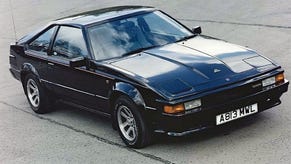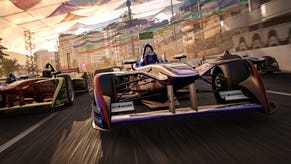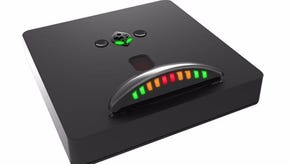How does Forza 7 improve on Xbox One X over base hardware?
And can Microsoft's new console match the high-end 4K PC experience?
Built to run existing game engines at native 4K, our first taste of what the new Xbox One X hardware could deliver came in the form of a Forza Motorsport tech demo, built to base Xbox One spec, but offering ultra HD resolution, a locked 60 frames per second - and with processing headroom to spare. So just what has developer Turn 10 done with this extra power and how does Xbox One X stack up against PC and standard Xbox hardware? With the release of a Forza Motorsport 7 demo this week, we could finally find out.
First things first: while our Xbox One and PC assets are derived from this week's demo release, our fresh new X assets hail from a preview build of the entire Forza game we saw during Microsoft's press showcase a couple of weeks back, and there are some differences - the circuits you've played in the demo constitute the first three races of the single-player career mode in the final game, for example, and this build shows a variance in lighting.
Whether this is down to a factor of the dynamic lighting and weather system or simply a peculiarity of the preview build or settings in the capture equipment Microsoft had at the event remains to be seen, but the differences between the two consoles - and indeed the commonality with PC - are fascinating. Remember that Turn 10 had access to Project Scorpio hardware as soon as it was available in its earliest prototype form, so it stands to reason that this team would be able to get the best out of the new console.
To dive right in, the Xbox One X version runs at native 4K and a solid 60 frames per second. The resulting gameplay feels, crisp, responsive, and engaging, with a real sense of polish that few multi-platform racing titles can match, without any hitches or unwanted visual distractions impacting upon the race. We can't stress enough how consistent the performance level is on both consoles - though anyone who has played a Turn 10 Xbox One product should have a pretty clear idea. Graphical quality also falls in line nicely with the PC build running fully maxed out, and that's with dynamic optimisation disabled, ensuring that we're getting the true, full-fat PC experience.
The finely detailed texture work stands out at ultra HD, with high frequency detailing present across distant scenery, and without any obvious signs of LOD transitioning. Full quality assets look to be deployed across the scene, and this brings an extra layer of refinement to the presentation over the standard Xbox One presentation. Looking closely elsewhere, shadow quality, post-processing, and texture filtering all appear identical across Xbox One X and PC.
Colour differences aside (and we can't factor out an on-site capture issue on the day), the only real difference between PC and Xbox One X concerns anti-aliasing. On the PC, multi-sampling up to 8x is in play, which provides a crisp presentation with some nicely resolved sub-pixel details. EQAA is used instead on Xbox One X - an AMD specific AA implementation that shares similarities with MSAA. Sub-pixel reproduction isn't quite as good on the One X, but really, outside of the power lines appearing less distinct it's not something that sticks out when viewing on a 4K screen from typical living room viewing distances. The pixel density ensures that both looks reasonably clean and crisp.
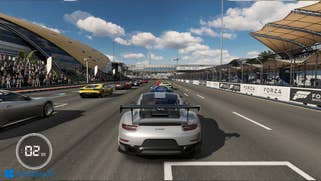


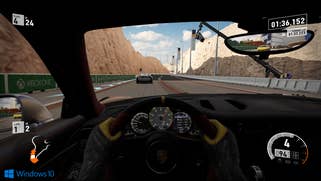


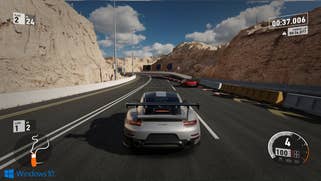
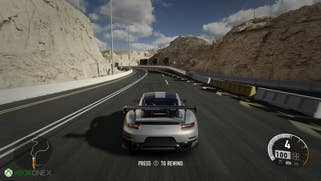




Essentially, the Xbox One X looks to be delivering the ultra-high-end experience without compromising performance, and as a result the game looks and feels great to play. It's shaping up to be the real deal - a native 4K60 racing game that features top-end PC quality visuals but on a console.
But what about the standard Xbox One version? Well, the good news here is that despite some graphical reductions in a few areas, the game still looks great, with crisp image quality and solid performance. Resolution comes in at native 1080p, while performance is locked at the desired 60fps. Whether bunched up with other cars at the starting grid, or driving through heavy rain, the game never loses its silky smooth 60Hz refresh. The experience remains consistently fluid and responsive throughout, and what's impressive here is that in many areas the visuals are reasonably comparable to PC and Xbox One X.
Of course, assets and effects are reduced in quality, but this is less apparent than you might expect when focused on racing. For example, elements such as higher resolution shadows, increase precision when rendering depth of field, and slight tweaks to foliage density and lighting on Xbox One X are quite subtle. These areas still look polished on the standard Xbox, with the boost in quality on X and PC lending these versions a more refined look. It's something that will be more noticeable on a 4K screen where the extra sharpness and pixel precision comes into play.
That said, some areas see dramatic improvements on the higher-end systems. Higher resolution 4K assets add more in the way of fine high frequency detail, while level of detail streaming is less aggressive. On the regular Xbox One, lower quality assets are deployed across distant scenery, with simpler textures and geometry complexity reducing clarity in these areas. But on One X and PC, these elements are visibly more detailed, and bring more clarity to Forza 7's beautifully rendered tracks.
Of course, it's worth pointing out that while Xbox One X and PC clearly deliver a considerable visual upgrade in several areas, the game still looks great on standard Xbox One hardware - and you're getting a solid experience that works very well on an HD screen that feels optimised for Microsoft's machine. But move to the X and you'll get a nice upgrade that not only delivers a sharpness boost due to the move to 4K, but also increases asset and visual effects quality to really make the most of the boost to pixel count. It's very impressive and shows off what the Xbox One X hardware can do in capable hands.
So, based on what we've seen so far, the outlook is positive for Forza 7 and it's clear that Turn 10 has things firmly locked down across all platforms. The Xbox One X looks to deliver a high-end experience usually limited to cutting edge PCs, while the standard Xbox One hands in excellent results hitting native 1080p and a solid 60fps, with visual quality that holds up very well. Overall, Forza 7 is shaping up to be a highly accomplished release across all formats, and we'll be interested to take a more in-depth look at the game when it launches. But for now, impressions suggest that all platforms get a great experience and we can't wait to see more.
